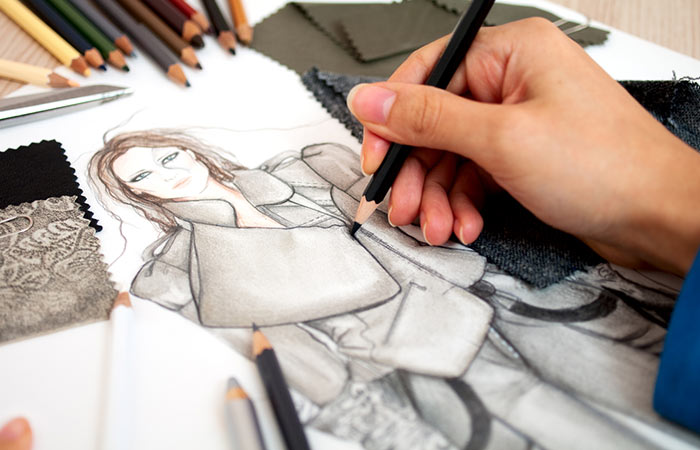Fashion designing is a creative and rewarding career choice for individuals who have a passion for style, innovation, and self-expression. Whether you dream of designing clothing, accessories, or even launching your own fashion label, this article will guide you through the essential steps to becoming a successful fashion designer. From acquiring the necessary skills and education to building a portfolio and gaining industry experience, we will cover it all in detail. So, if you’re ready to embark on a journey in the world of fashion, let’s dive in!
Develop Your Skills and Creativity
To excel in the field of fashion design, it’s crucial to develop and hone your skills and unleash your creativity. Here are some essential steps to get started:
a. Acquire Knowledge: Familiarize yourself with fashion history, trends, and current industry practices. Study the works of renowned designers and gain a deep understanding of fabrics, colors, and garment construction.
b. Enroll in a Fashion Design Program: Pursue a formal education in fashion design by enrolling in a reputable fashion school or university. These programs provide comprehensive training in design principles, pattern making, draping, and more.
c. Master Design Techniques: Practice sketching, rendering, and illustrating fashion designs. Develop your understanding of garment construction and experiment with different materials and techniques.
d. Stay Updated: Keep up with the latest fashion trends, attend fashion shows, and follow influential fashion blogs and magazines to stay informed and inspired.
Build Your Portfolio
A strong portfolio is a crucial tool for any aspiring fashion designer. It showcases your talent, creativity, and unique style. Here’s how to create an impressive portfolio:
a. Develop a Signature Style: Define your design aesthetic and create a cohesive body of work that reflects your personal style. Experiment with various themes, color palettes, and silhouettes to showcase your versatility.
b. Include a Variety of Work: Include a range of designs, such as sketches, illustrations, mood boards, and photographs of finished garments. Highlight your ability to conceptualize and translate ideas into tangible designs.
c. Keep It Organized: Present your portfolio in a clean and professional manner. Organize your work chronologically or by theme, and ensure that it is well-structured and easy to navigate.
d. Showcase Your Best Work: Only include your strongest and most innovative designs in your portfolio. Quality is more important than quantity.
Gain Industry Experience
To establish yourself as a fashion designer, gaining industry experience is vital. Here are some strategies to kick-start your career:
a. Internships: Seek internships or apprenticeships with established fashion designers, fashion houses, or design studios. This hands-on experience will provide valuable insights into the industry and help you build connections.
b. Networking: Attend fashion industry events, trade shows, and seminars to network with professionals and other aspiring designers. Building connections can lead to collaborations and job opportunities.
c. Fashion Competitions: Participate in fashion competitions and design contests to gain exposure and recognition. Winning or being a finalist in prestigious competitions can open doors to industry insiders.
d. Freelancing: Consider freelancing as a way to gain practical experience. Offer your design services to local boutiques, fashion startups, or independent designers to build your portfolio and reputation.
Launch Your Fashion Career
Once you have acquired the necessary skills and experience, it’s time to launch your fashion career. Here are some crucial steps to take:
a. Create a Brand: Develop a unique brand identity that reflects your design philosophy and target market. Define






